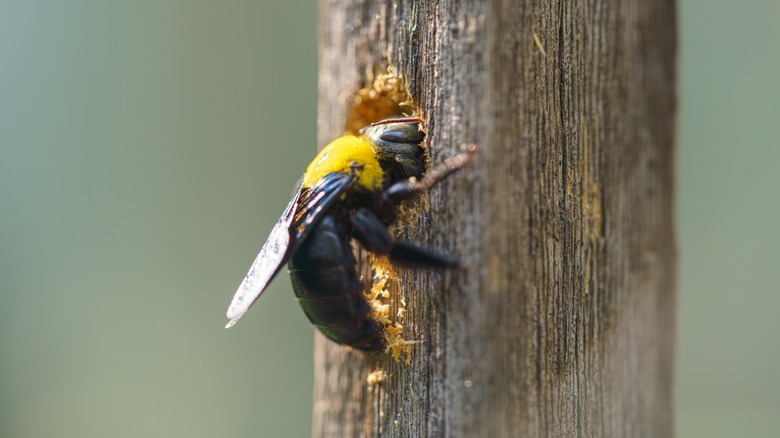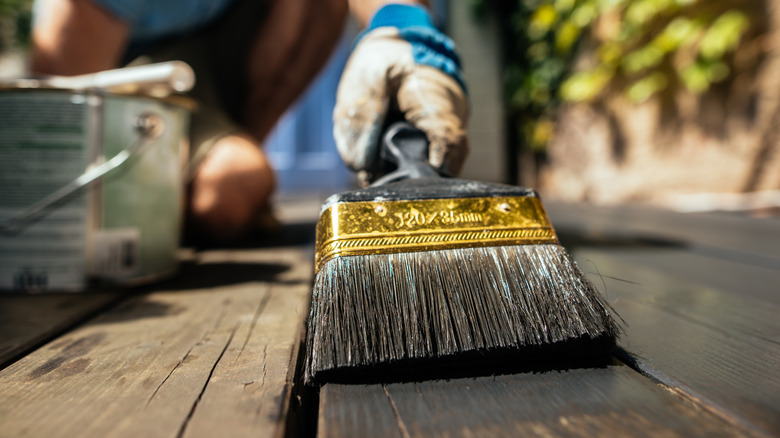The Simple Solution That Can Help Stop A Carpenter Bee Infestation Before It Starts
Bees are great for the environment and every homeowner who has a garden... until they aren't. They can swarm, sting, and if you're unlucky, decide to make their nest close enough to your home that it would require a call to pest control. However, if the bees in question are carpenter bees, then you also have to worry about damage to wooden structures. These could include your porch, pergola, outdoor furniture, or even your entire house. These wooden fixtures are at risk during a carpenter bee infestation because these insects like to burrow into them to build nests and lay their eggs.
There are some ways to get these carpenter bees out of your home before they do too much damage, or attract woodpeckers that increase the damage while trying to get at the bee larvae. However, it's better to be safe than sorry, so you should prevent them from coming in the first place. This is because by the time you start seeing those telltale circular holes and sawdust deposits, it might be too late. If you want to repel carpenter bees from your wooden fixtures, you just have to apply a protective layer over them. This could be painting, sealing, or pressure-treating, and we'll tell you why.
Protective coatings as a deterrent against carpenter bees
Usually, protective coatings over wood are there to shield against the elements and moisture, but they also serve to repel carpenter bees. Carpenter bees need to see or feel the surface of a material to recognize it as wood, but with a coating like paint or sealant over it, they may not detect the grain on your wooden fixtures. This is definitely a situation where painting is better than staining for your outdoor wood, because a stain is absorbed into the wood fibers while the paint sits as a protective layer over it. That shiny layer makes your furniture feel less like wood to the bees, deterring digging. If you insist on staining, adding a layer of high-gloss topcoat is necessary, as it makes the surface difficult for the bees to grip with their mandibles.
Pressure-treated wood typically comes with a protective barrier, so they aren't attractive to carpenter bees. Also, some of these woods are treated with imidacloprid, which is an insecticide. Imidacloprid works by disrupting the insect's nerve signals, damaging it, and causing the insect's death. However, carpenter bees are vital to the ecosystem, so you may not wish to kill them. Other deterrent methods might be preferred.
Here's the kicker, though: None of these solutions are actually 100% successful. A determined carpenter bee can still burrow into painted, stained, and even pressure-treated wood under certain conditions, so you may want to try other preventive measures alongside them. You can try this simple paper bag hack to get them off your property, or use vinyl or aluminum products that the bees can't penetrate.

